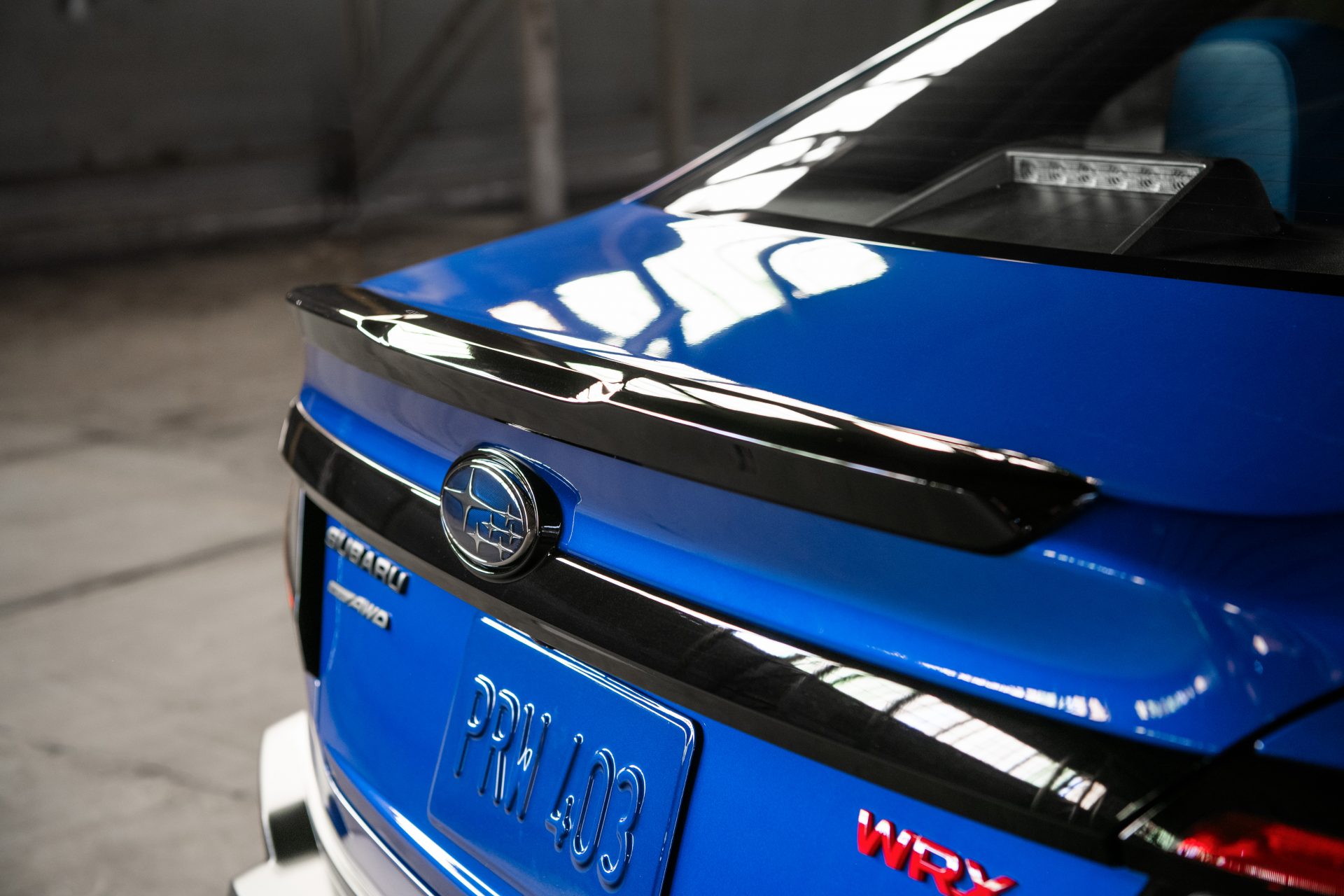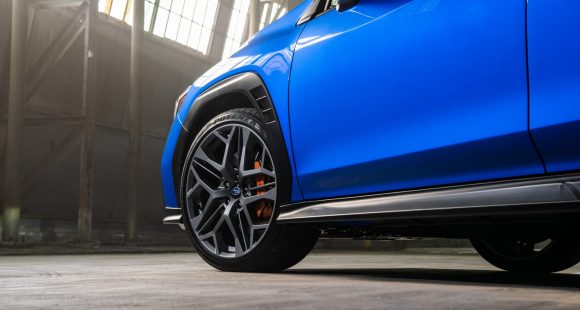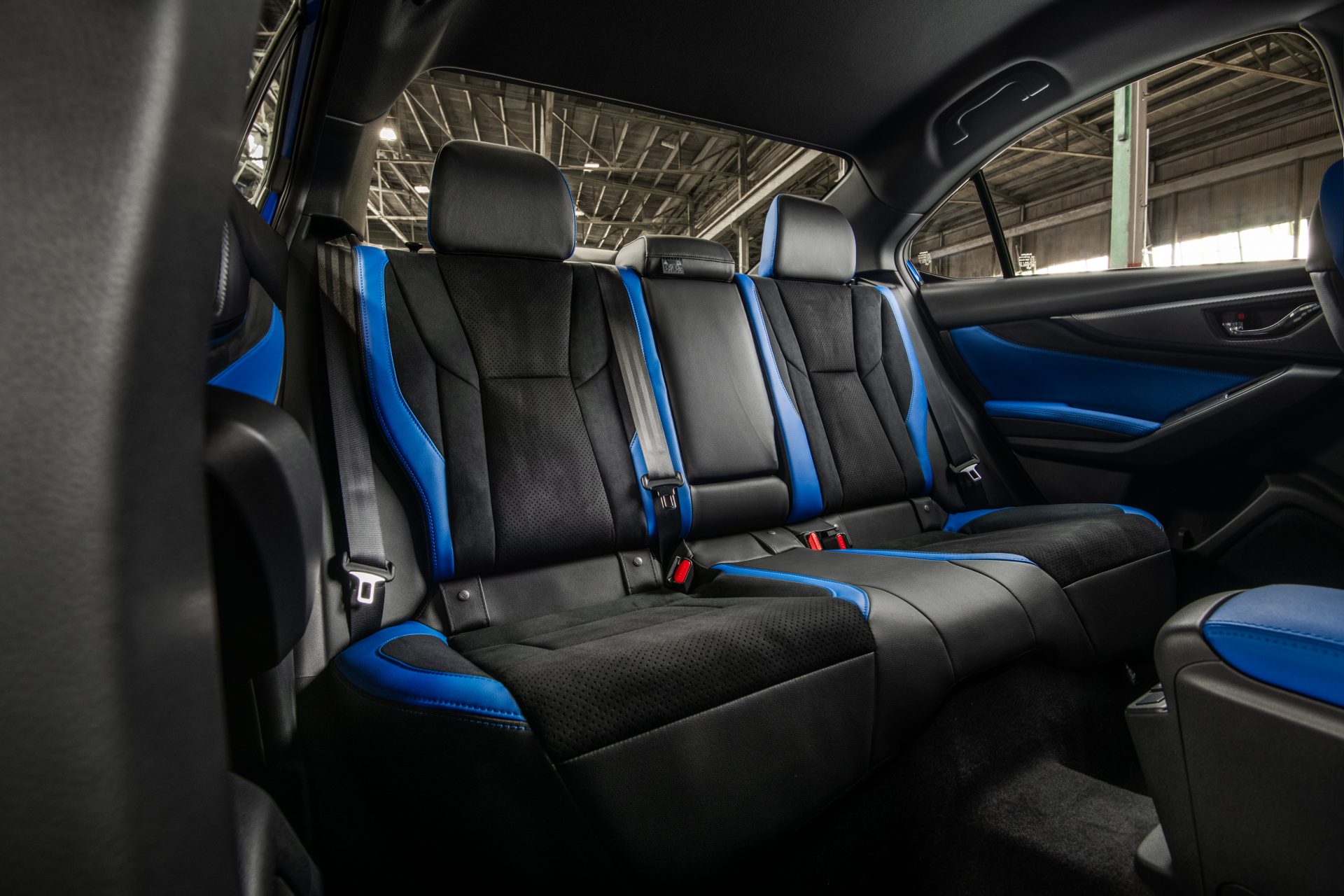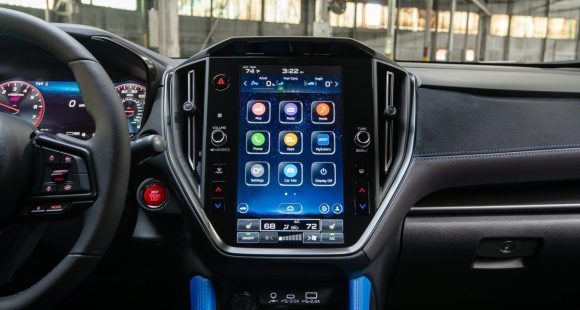2014 Lexus IS
In the world of sport sedans, the Lexus IS tends to get overlooked. It’s not like it hasn’t tried with the top IS-F model getting near universal praise. It seems to be more a brand thing; upscale buyers see Lexus as far more for comfort than cornering. But, with dynamic new entries like the Cadillac ATS getting good notices, Lexus had to do something. So the 3rd generation IS had better be something special.
The 2014 Lexus IS is easily recognized as a new-gen Lexus, fully taking on the big mouth, wide stance, and dynamic high-shouldered look of its larger GS and LS kin. The new IS comes in both 250 and 350 models, with both all-wheel-drive and F-Sport versions of both obtainable. We spent most of our test time in a 250 AWD.
 The 250 nomenclature is indicative of the 2.5-liter engine under the hood, which is the smaller of the 2 V6’s available. It carries over unchanged from last year outputting the same 204-horsepower and 185 lb-ft. of torque and sending power through a 6-speed automatic transmission with manual shifting and a rev-matching Sport mode.
The 250 nomenclature is indicative of the 2.5-liter engine under the hood, which is the smaller of the 2 V6’s available. It carries over unchanged from last year outputting the same 204-horsepower and 185 lb-ft. of torque and sending power through a 6-speed automatic transmission with manual shifting and a rev-matching Sport mode.
The 350’s 3.5-liter V6 is also carryover, delivering 306-horsepower and 277 lb-ft. of torque; only now it attaches to a new 8-speed automatic.
So what else is new? Well, the IS has clearly gotten bigger. Wheelbase is up almost 3-inches, while overall length grows more than 3. It’s also wider, a bit taller, and it’s wrapped in some great looking new sheet metal. Shock-and-Awe seems the theme, as the new IS takes an even more aggressive turn, sporting its own unique take on the now familiar Lexus spindle grille.
Fog lights are standard on all but F-sport models which drop them in favor of air intakes for brake cooling ducts. From there, sharp body lines highlight the wheel arches and rise to reaffirm the rear-wheel-drive proportions. There are plenty of aero treatments throughout, helping the IS cut through the air better than Lexus’ LFA supercar. The cabin is set back, further accentuating the long hood. 17-inch wheels are standard, with three takes on 18’s available.
 F-sport models don an even more hostile makeover with an extra aggressive chain-mail grille insert, and of course badging to set them apart. There’s a stiffer structure lying underneath all IS’s, with additional bracing and revised platforms for mounting the all independent front and rear suspensions. The rear got extra attention with a new multi-link design that both improves packaging for more trunk space and increases cornering grip. Which should translate into a more rewarding experience where it matters most, on the track.
F-sport models don an even more hostile makeover with an extra aggressive chain-mail grille insert, and of course badging to set them apart. There’s a stiffer structure lying underneath all IS’s, with additional bracing and revised platforms for mounting the all independent front and rear suspensions. The rear got extra attention with a new multi-link design that both improves packaging for more trunk space and increases cornering grip. Which should translate into a more rewarding experience where it matters most, on the track.
We got a chance to sample the full line-up of IS’s at Driveway Austin in Texas. Weight is still up there, around 3,700 pounds depending on model, and a good portion of that still seems to rest over the front wheels, but overall, dynamics have greatly improved.
BEN DAVIS: All the work they’ve done to add rigidity to the body really pays off on the track. Turn-ins are lightning crisp, excellent feel through the wheel, just the right amount of flex, back-end follows through beautifully. This car is such a blast to drive on the track; and the faster you go, the better it gets.
 JOHN DAVIS: And of course interiors don’t get much better than Lexus either, though the IS brings a more cockpit approach to the line-up with the center console rising high to meet the very horizontal dash. Materials are all first-rate of course; there are selectable driving modes, lane departure warnings, and traffic and weather information that are subscription free. Lexus’s Remote touch controller is available for managing the standard dash-top 7-inch display, and there’s also a 4.2-inch TFT screen in the I.P. for additional information.
JOHN DAVIS: And of course interiors don’t get much better than Lexus either, though the IS brings a more cockpit approach to the line-up with the center console rising high to meet the very horizontal dash. Materials are all first-rate of course; there are selectable driving modes, lane departure warnings, and traffic and weather information that are subscription free. Lexus’s Remote touch controller is available for managing the standard dash-top 7-inch display, and there’s also a 4.2-inch TFT screen in the I.P. for additional information.
F-sport models add their own unique gauge package inspired by the LFA.
Front seats feature perforated leather and good support, while rear seat passenger’s benefit most from the additional wheelbase as leg room is up by over an inch-and-a-half. Trunk space is up as well, with room for 13.8 cubic-ft of cargo. Government Fuel Economy Ratings haven’t been finalized, but expect them to range from 21-City, 30-Highway, and 24-Combined for the 250; 19-City, 28-Highway, and 22-Comined for the 350.
Pricing for the new IS has been set, and there isn’t much of an increase over the current models. The 2014 Lexus IS 250 starts at $36,845 and the IS 350 at $40,360, both including delivery charge.
The battle in the compact sport sedan arena has heated up recently, as new entries are really taking aim at traditional class standouts like the BMW 3-series. So, how does the 2014 Lexus IS fit in and is it indeed special? Well if you’re looking for the ultimate track-weapon, quiet simply the IS falls short; though it has been greatly improved in this area. If, on the other hand, you’re looking for a highly capable hauler that will also coddle you in Lexus luxury and technology, then you’ll find the new IS to be very special indeed.
Specifications
- Engine: 2.5-liter
- Horsepower: 204
- Torque: 185 lb-ft.
- EPA: 21 mpg city/ 30 mpg highway
2025 Subaru WRX tS
Subaru’s “World Rally eXperimental” Gets Tecnica-Tuned Tech
Building on its global rally heritage, WRX has been a standalone Subaru nameplate, marketed separately from garden variety Impreza, for two generations now. And while the current WRX still lacks the full STI treatment, this WRX tS serves up some of that high-performance spice we’ve been longing for.
Before we go flat out into our Track Test of this 2025 Subaru WRX tS, lets open the Subaru dictionary so we’re all on the same page. “tS” stands for “tuned by STI;” and “STI” is an acronym for “Subaru Tecnica International,” the brand’s high-performance sub-group best known for upgrading the WRX— oh, that stands for “World Rally eXperimental,” in case you didn’t know.
All that said, STI has been largely dormant for this WRX generation, but this tS sprinkles more of their engineering magic into the mix. No, that doesn’t mean extra power, but does mean significant chassis-related improvements.
First, electronically controlled dampers, adjustable through the 11.6-inch tablet-style infotainment screen. That meant a softer “comfort” mode on the 10+ hour commute to and from Savannah’s Roebling Road Raceway. But once we were there, it was the firmer “Sport+” setting all the way, heightening response from the WRX’s throttle and already quick dual-pinion power steering system. There’s still some body roll for rally-esque weight transfer, but it’s well sorted and provides the “toss-ability” you want in a WRX.
Though if you do autocross your tS, which we implore you to do, you might feel the six-piston front, two-piston rear Brembo brakes first. The bite is strong, giving good rotation in the corners and plenty of “halt” for this 3,400 lb. compact with minimal fade, keeping us on track all week…until some unfortunate winter weather passed overhead. No worries here, as Subaru’s Symmetrical All-Wheel-Drive system got us to the track for some powdered deserts: Frosted donuts served up Michelin style, a set of winter tires different from the grippy Bridgestone Potenza S007 rubber the tS typically rides on. Some prior hot laps of California’s Sonoma Raceway gave credence to those Bridgestones, and showed us what this hot-compact can do in ideal conditions.
It’s well sorted and provides the “toss-ability” you want in a WRX.
Other tS enhancements are cabin-based, namely these beautiful blue Recaros. Most of our staff appreciated their moderately-aggressive bolstering on both street and track. And they’re even heated, too. Another tS-only appointment is this 12.3-inch digital gauge display. It mimics the standard analog gauges with some additional info, but can switch to a navigation mode for more convenient route guidance.
We do wish our tS came in the new Galaxy Purple or the trademark World Rally Blue, but this Crystal White paint wasn’t too shabby, contrasting its Cherry Blossom Red badging and blacked-out lip spoiler. Otherwise, the tS is like any other WRX, down to the hood scoop funneling air to the top-mounted intercooler.
Underneath is the same turbocharged 2.4-liter flat-four in all other trims, boxing at 271 horsepower and 258 lb-ft of torque. The freak winter weather stopped straight-line testing, but a 0-60 time estimate of 5.5 seconds is about as spry as you realistically need, pulling strong through most of the tach; though the 6,000 RPM redline required attentive shifting of the six-speed box, which the tS comes exclusively with. The throws are precise, if a little long, and the clutch is wonderfully weighted.
With discontinuation of the Base trim, pricing for the WRX now starts with Premium at $36,920. The tS is at the top of the lineup with the automatic-only GT, both starting at $46,875. All WRXs continue to be made in Gunma, Japan.
If you’re an enthusiast itching to do the tuning yourself, perhaps the 2025 Subaru WRX tS is not for you. But if you want a plug-and-play experience, this is it. While it won’t exactly bestow the loose-cannon, top-level driving skills exhibited by famous WRC drivers upon you, the tS moves this WRX’s game in a direction we’ve so desperately wanted Subaru to take.
Specifications
As Tested
- Engine: 2.4-liter flat-four
- Tranmission: 6-speed manual
- Horsepower: 271
- Torque: 258 lb-ft











































